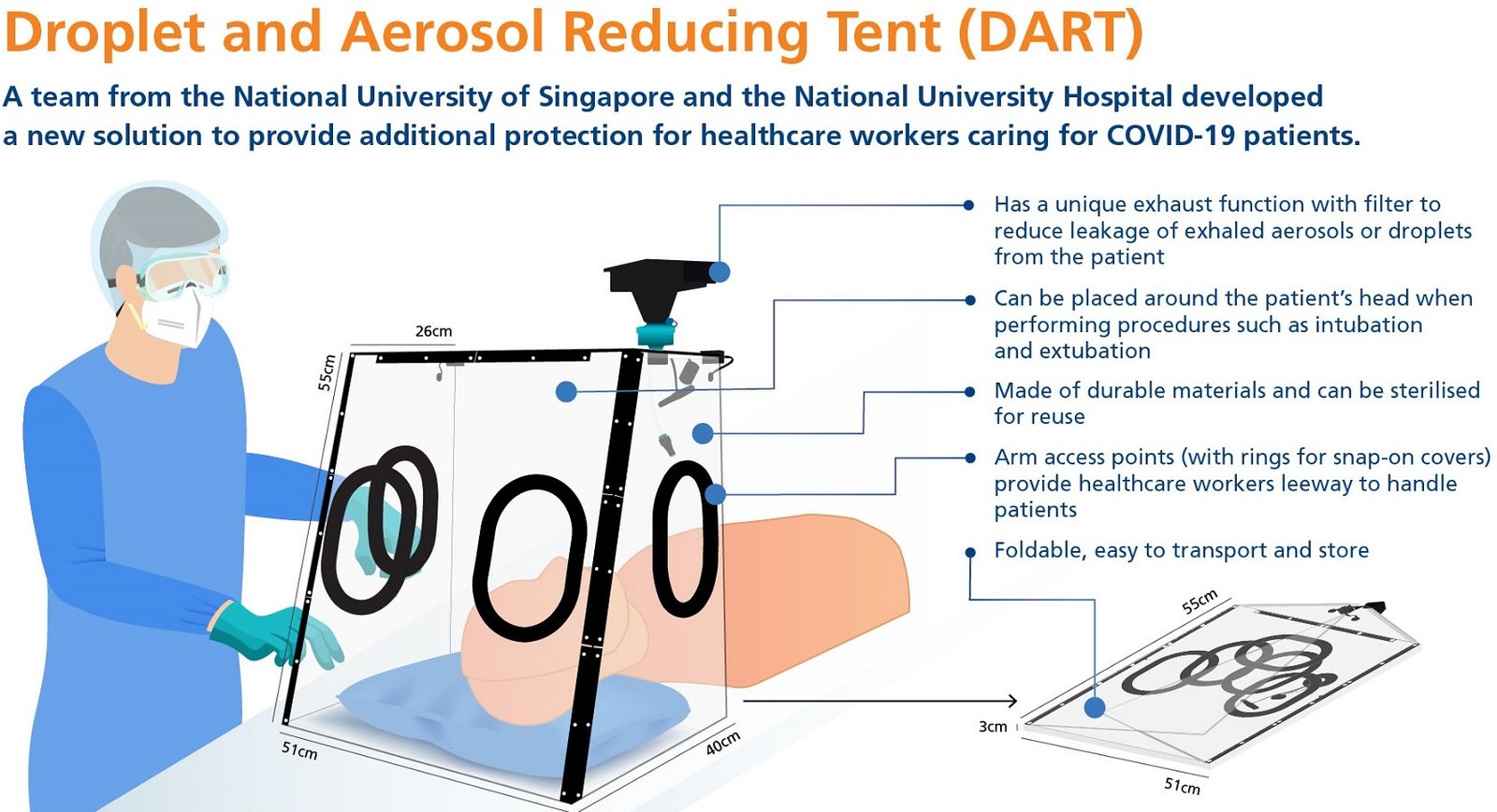"Portable Droplet and Aerosol Reducing Tent (DART)" lessens COVID-19 risk
25 June 2020 | News
Singapore scientists have invented a reusable, foldable and sterilisable tent-like device to decrease the virus exposure in healthcare workers who are treating COVID-19 patients

Photo credit: National University of Singapore (NUS)
A team of researchers from the National University of Singapore (NUS) has invented a foldable tent-like device that serves as a physical shield to reduce the risk of exposure to pathogens for healthcare workers performing droplet and aerosol-generating procedures on COVID-19 patients. Known as the Droplet and Aerosol Reducing Tent (DART), the device was designed in collaboration with doctors from the National University Hospital (NUH).
A practical and versatile solution
The DART is a portable, tent-like structure that that can be placed around the patient’s head when intubating or extubating. It weighs three kilograms, and can be folded into a flat structure measuring around 51 centimetres by 55 centimetres, with a thickness of three centimetres, making it easy to transport, store and sterilise. It is also simple and fast to set up.
The device features transparent polycarbonate panels, 3D printed nylon joints and Delrin inserts. These durable materials were chosen by the NUS team to enable the device to be sterilised by all standard forms of decontamination used in hospitals, such as elevated temperature autoclaving, and using alcohol of 70 per cent concentration. This facilitates the reusability of the device, and eliminates the risk of cross-contamination.
Arm access ports are situated on the back and side panels of the device. The snap-on flanges allow the attachment of disposable sleeves or diaphragms. This addresses the concern of the arm ports being high-risk areas of contamination and gives the healthcare workers the option to use either sleeved or diaphragm seals – materials easily available in hospitals – according to their preference. The elliptical shape of the access ports gives the user more leeway for arm movements and to manoeuvre, which are important in handling the patient.
A key feature of the DART is its ability to direct air within itself through a High Efficiency Particulate Air (HEPA) filter. It has a set of connectors that enables suction from a central vacuum system, or by a battery-operated fan attached to a HEPA filter. The negative pressure generated reduces leakage of exhaled aerosols or droplets from the patient out of the confines of the DART.
Preliminary findings by the research team showed that the DART performs its barrier function as designed, and the exhaust function via the HEPA filter gives additional assurance to the user.
Prototype testing in Singapore hospitals
The research team has produced 25 prototypes which are being tested in different departments and hospitals of the National University Health System (namely NUH, Ng Teng Fong General Hospital and Alexandra Hospital), Tan Tock Seng Hospital, Changi General Hospital, Thomson Medical Centre, and several private hospitals operated by Parkway Hospitals Singapore.
The team is looking to swiftly refine the DART based on the feedback provided by different medical departments, and hopes to provide the device as a form of medical aid to Singapore hospitals as well as hospitals in the region. The team will be partnering Temasek Foundation to distribute the DART, complementing its donation of ventilators to the region.
The DART is one of the innovations developed by NUS and NUH to tackle pressing issues that healthcare workers face in the current global pandemic.












